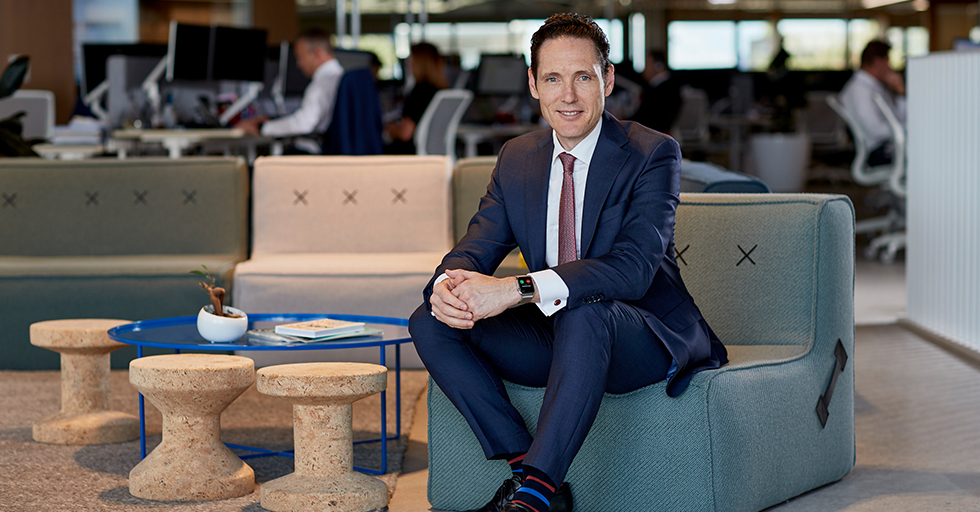04 May 2018
Creating sustainable business parks

Business parks represent a significant part of the property industry with millions of dollars invested either acquiring or upgrading them every year. Owners and tenants are constantly seeking new sustainable techniques to drive efficiencies, and hence significant cost savings, to future proof these developments.
IMPROVING SUSTAINABILITY RATINGS
The focus for business park owners is to deliver direct and tangible benefits to customers by reducing total occupancy costs and operating expenses, whilst also improving the health and wellbeing of employees. From a business perspective, the ongoing pursuit of improvement in sustainability ratings for facilities demonstrates a commitment to market leadership. This approach is critical to future proofing facilities so they continue to deliver value and remain competitive. Everyone now lives and operates in a carbon constrained economy and buildings are a significant contributor to greenhouse gas emissions. Reducing each building’s carbon footprint assists not just in alleviating further stress on the environment but also to improve the financial bottom line.
STRIVING FOR GREEN STARS
Over the past couple of years, there has been a strong industry focus on increasing Green Star ratings in facilities to achieve superior results for clients. Since the introduction of the Green Star approach, customers have firmly embraced the concept. This approach has also helped companies further align their values with customers to demonstrate a shared commitment to common goals.
Most new institutional grade industrial business park facilities across Australia are rated 4 Star, however very little thought is given to customer benefits. A standard 15,000 – 20,000 square metre 4 Star rated facility is expected to deliver annual average savings between $1.50 - $1.75 per square metre when compared with a standard Building Council of Australia compliant building. By investing in targeted initiatives and technology to achieve a 6 Star rating, these savings could be increased by approximately 165 per cent over a 10 year term. In some cases, the adopted initiatives can deliver a cash flow positive result for the occupant from year one.
MARTIN BROWER’S INDUSTRIAL FACILITY LEADS THE WAY
The implementation of the highest level of certification, can yield significant benefits including energy and water cost savings. Over the years, it has become clear that the way to ensure the longevity of facilities is to structure the outcome to benefit the consumer. The enhanced productivity of staff working in a space that promotes good design and environmental attributes is also a significant tangible benefit.
Logistics services provider, Martin Brower is one of the first companies in Australia to achieve outstanding environmental credentials for its new $30 million industrial facility – a 6 Star Green Star Design Review rating from the Green Building Council of Australia. It was specifically designed to accommodate the needs of Martin Brower’s main client – McDonalds. The facility in Western Sydney, developed by Frasers Property Australia redefines excellence in the industrial space.
It is one of the most technologically advanced temperature controlled storage and distribution facilities in Australia. A striking architectural form has been achieved using quality materials and finishes integrated with an absolute focus to improve supply chain efficiencies.
SUSTAINABILITY FACILITY HIGHLIGHTS
Martin Brower’s facility represents world’s best practice and features many sustainability inclusions. These include:
- A state of the art ammonia industrial refrigeration system has been utilised which ensures future proofing of the system with both a global warming potential (GWP) and ozone depletion potential (ODP) of zero.
- On-site power is generated utilising a roof mounted 777kW solar PV system and every aspect of the facility employs separate metering to enable fine tuning of each element for maximum efficiency. This information is collated and remotely accessible utilising a computer controlled energy monitoring programme that notifies of deviations from set energy use targets.
- General light fittings are LED and are linked via multiple C-BUS controls. Warehouse lights have dual PE controls that monitor the available natural light and automatically react to maintain the required lux levels. Office lights are equipped with interlinked “organic-response” sensors that have light and movement sensing capabilities which anticipate the required illumination levels.
- Outstanding water efficiency is achieved by harvesting rainwater with total on site collection capacity of 550,000 litres for re-use within the refrigeration systems, toilets, irrigation and truck wash. This has saved over $1,800 in the first six months of operation.
- Maximum efficiencies in the plant are achieved using variable frequency drives which allow exact matching of capacity to prevailing heat loads. The system is controlled via a central computer system which allows monitoring and operation from anywhere in the world via a computer or smartphone.
- The main office, oriented to the north with large windows allows passive heating in the winter and large external shading devices minimise summer sun. The double glazing ensures the fabric is high performance which improves the energy efficiency for the office.
- The wellness of occupants is a central focus as reflected in the use of low VOC materials and low formaldehyde wood products throughout. Large windows with natural light increases staff alertness and visual respite for staff.
Martin Brower has significantly decreased its ongoing operational savings as a direct result of using state of the art energy and water efficiencies.
THE FUTURE IS SUSTAINABILITY
Each year the property industry continues to be one of the biggest contributors to greenhouse gas emissions in Australia. Influential property developers seek to create a positive legacy in the communities in which they develop. They have a responsibility to seek ways to decrease their carbon footprint, reduce the overall impact of buildings and to improve the health and wellbeing of those who use them. The pursuit of sustainable excellence in buildings is underpinned by intelligent future oriented thinking.
